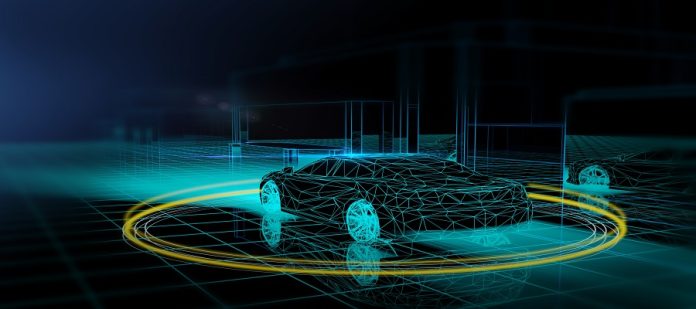In the realm of automotive research and development (R&D), hydraulic simulation tables play a crucial role in conducting tests on various components, ranging from vehicle internals like transmissions and suspensions to interior elements such as seats and headrests. However, as the automotive industry increasingly focuses on electric vehicles (EVs), engineers are faced with new design challenges that traditional test and simulation equipment cannot adequately address.
According to Kevin Oliverio, the hydraulics department manager at Element Materials Technology based in Warren, Michigan, most vibration testing for automotive suspensions and components typically operates up to around 50Hz. However, EV battery components require a significantly higher threshold. Frequencies ranging from 50 to 150Hz are necessary to simulate a capacitor’s ability to withstand vibration and evaluate the durability of soldering bonds. Furthermore, by conducting higher frequency tests reaching up to 150Hz, automakers and battery designers can precisely evaluate the charging and discharging rates in various circumstances. Oliverio explains that this level of testing provides feedback equivalent to the experience of a vehicle’s battery during both motion and stationary periods.
Element began testing battery components on a conventional simulation table for a major automotive original equipment manufacturer (OEM) approximately seven years ago. Recognizing the direction the auto industry was heading, Element expanded its testing capabilities by incorporating another simulation table. Through the use of battery cyclers, the company could observe a battery cell’s response over time. This led Element to enclose the table in an environmental chamber, equipped with fire suppression and venting systems. As the auto industry continued pushing the boundaries of EVs, Element aimed to stay ahead by incorporating high-frequency testing.
The upgraded high-frequency Moog MAST (Multi-Axis Simulation Table) can assess vehicle components, including batteries and electronics, for vibration and durability, replicating data collected during testing on proving grounds. The foundation of Moog’s high-frequency shaker table is a six-leg hexapod, initially developed for flight simulators. The hexapod features two equilateral triangular frames stacked with a 30° offset. Moog actuators connect each apex of the top triangle to the corresponding apexes below the lower triangle. The new table designed by Moog engineers can reach frequencies of up to 200Hz. Some EV battery packs on the market consist of as many as 2,500 batteries, weighing 450kg or more. The high-frequency Moog MAST features an impressive table size of 2,300 by 2,000mm and an actuator peak force of 53kN. It has the capability to accommodate a system payload weighing up to 600kg. Similar to conventional systems, the Moog MAST at Element offers six degrees of freedom, enabling movement in the x, y, and z axes, as well as rotational movements (pitch, roll, and yaw). Oliverio emphasizes that without simulation technology like Element possesses, OEMs lack real-time data on battery testing and often rely on generic specifications.
Element has combined the high-frequency table from Moog with the company’s motion control software and the Moog Test Controller to conduct EV battery pack testing in unprecedented ways. Using the test controller and a power spectral density profile, Oliverio and his team can subject a large battery pack to vibration testing before the OEM places the vehicle on the road, identifying potential issues. This allows Element to engage with vehicle manufacturers during the early stages of the design and development process. The insights gained at this early stage can then be applied to automotive specifications and use cases. Oliverio notes that customers now turn to Element to advance their testing further, replicating data collected from proving grounds or validating an EPA model using the new high-frequency shaker table.









